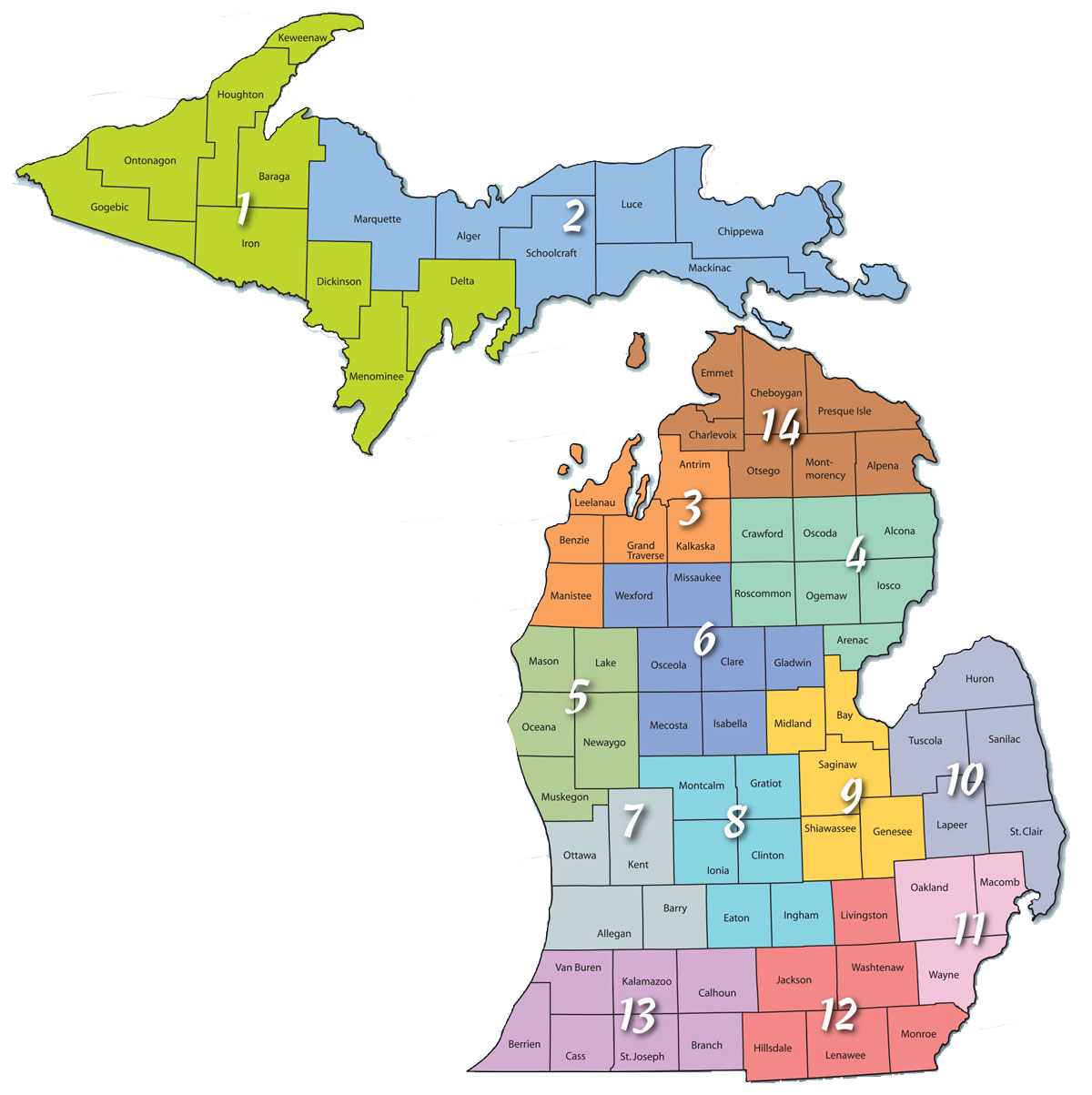What is MSU Extension?
Michigan State University Extension is committed to being responsive to Michigan's needs in the most efficient way possible. As a result, MSU Extension has built a structure to facilitate seamless response and action on important issues facing the state.
Extension's organizational principles are:
-
Focused and specialized programs
-
Reduced administrative overhead
-
Increased responsiveness
-
Enhanced accountability
-
Continued presence across the state
-
Adoption of emerging technologies
MSU Extension has also focused on key programming areas important to Michigan:
-
Leveraging Natural and Human Assets for Prosperity
-
Enhancing Michigan's First Green Industry: Agriculture and Agribusiness
-
Preparing Michigan's Children & Youth for the Future
-
Improving Health and Nutrition for Michigan Residents
Structure
 MSU Extension is comprised of four administrative units called Extension Program Institutes, one for each of the statewide programs. Staff previously assigned administrative responsibilities have been reassigned to programmatic roles in one of the four institutes. Other features of our structure include:
MSU Extension is comprised of four administrative units called Extension Program Institutes, one for each of the statewide programs. Staff previously assigned administrative responsibilities have been reassigned to programmatic roles in one of the four institutes. Other features of our structure include:
-
Consolidated budget and personnel function in one on-campus business office for the entire organization.
-
14 multi-county districts, each overseen by one district coordinator. (click for larger view of district map)
For contact information for institute directors, district coordinators and more, please visit the MSU Extension Leadership page.
Responsible resource use
Leverage: Every dollar the state invests in Michigan State University (MSU) AgBioResearch (formerly the Michigan Agricultural Experiment Station) and MSU Extension leverages an additional $2.10 in federal funds and external contracts, grants and other revenues to serve the state’s residents.
Community Benefits: For every dollar invested, the AgBioResearch/MSU Extension programs generate an estimated $5.60 of benefits to the state and nation.
Economic Stimulus: Every dollar the state invests in AgBioResearch/MSU Extension stimulates another $1.81 in state economic activity and state tax revenues.
Cost/Benefit Ratio: Combining the above effects along with the additional tax revenue returns to the state results in a ratio of economic and social benefits to net state economic costs of 16:1.
Facts about AgBioResearch and MSU Extension resources *
![]()
![]()
AgBioResearch and MSU Extension represent important long-term investments in two of MSU’s three primary missions—research and extension. Continued investment in these arms of the university's mission will enable the institution to remain a strong, vital contributor to the state’s economy, its communities and residents.
As integral components of a major land-grant research institution, AgBioResearch and MSU Extension should be positioned for budgetary consideration alongside the state’s other research institutions.
Both organizations conduct regular assessments to ensure that they are best using their resources to meet Michigan’s needs.
The state’s $61.9 million investment in the AgBioResearch and MSU Extension generates nearly $1 billion for Michigan’s residents.
 MSU Extension and AgBioResearch use university resources to address Michigan’s key economic issues. From preparing young people for higher education and career readiness through programs like 4-H, to developing critical processes that will power the agri-food industry and bioeconomy based businesses, these two entities are inextricably linked in work that will guide Michigan’s future.
MSU Extension and AgBioResearch use university resources to address Michigan’s key economic issues. From preparing young people for higher education and career readiness through programs like 4-H, to developing critical processes that will power the agri-food industry and bioeconomy based businesses, these two entities are inextricably linked in work that will guide Michigan’s future.
Michigan’s food and agricultural system is a thriving $91.4 billion contributor to the state’s economy. It is fueled by AgBioResearch projects and initiatives and MSU Extension educational efforts that look at every aspect of the system, from the plant cell level to the economics of the entire food system.
MSU Extension and AgBioResearch faculty members conduct work that is improving human, animal and plant nutrition and health that will not only enhance life in Michigan but also across the nation and around the world.
* Economic analysis by Steven R. Miller, Center for Economic Analysis, MSU Department of Agricultural, Food, and Resource Economics



 Print
Print Email
Email